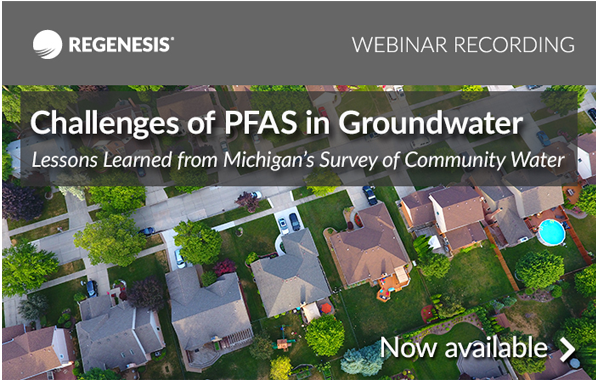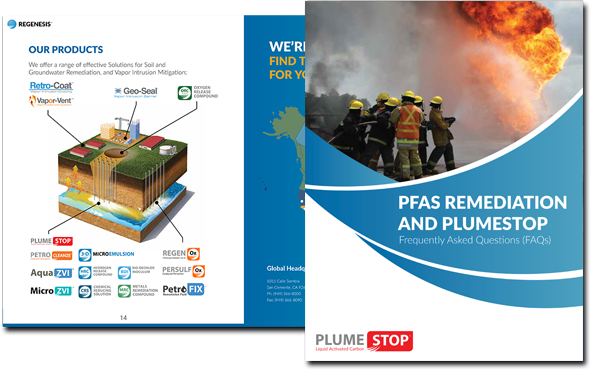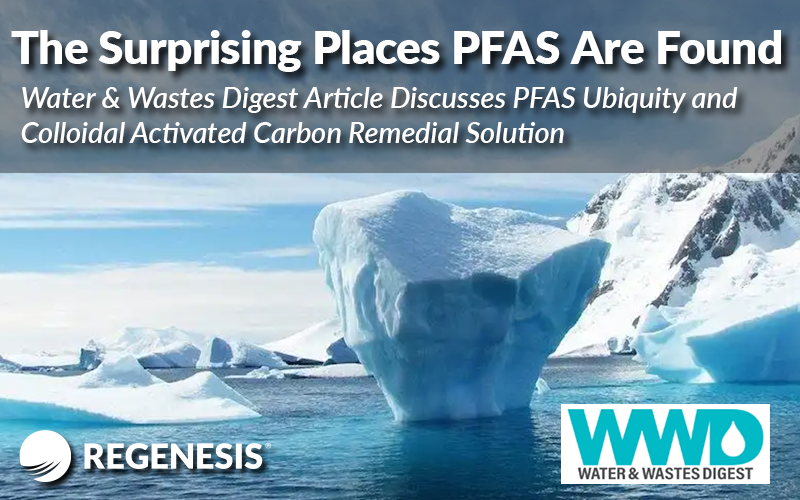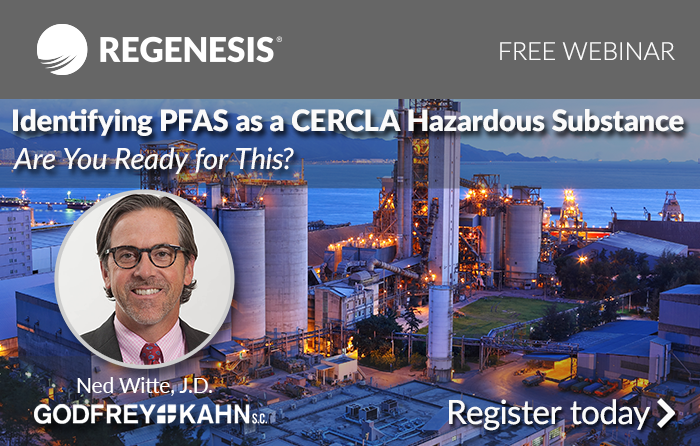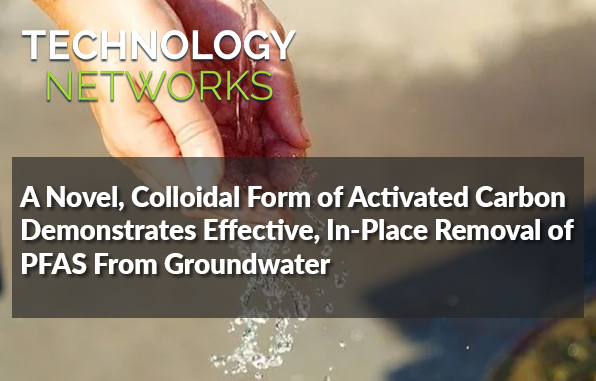
Reduced to Non-Detect

For PFAS


RESOURCES
3rd PARTY JOURNAL ARTICLES ON PFAS
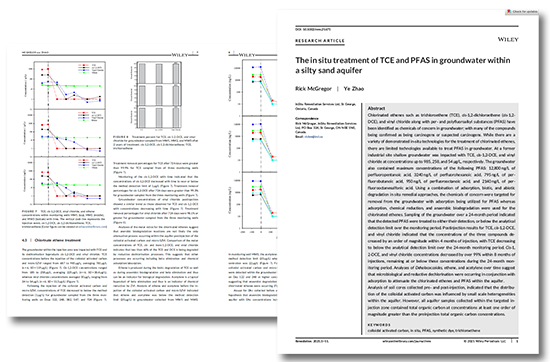
Treatment of PFAS and TCE
This article published in Wiley’s Remediation Journal reviews in-situ treatment of TCE and PFAS in groundwater at an industrial site within a silty sand aquifer.
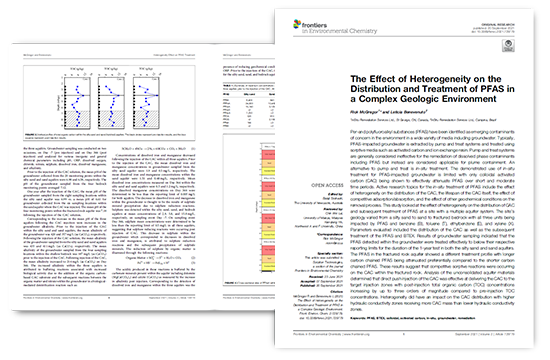
The Effect of Heterogeneity
This article published in Frontiers in Environmental Chemistry reviews the effect of heterogeneity on the treatment of PFAS at a site with a multiple aquifer system.
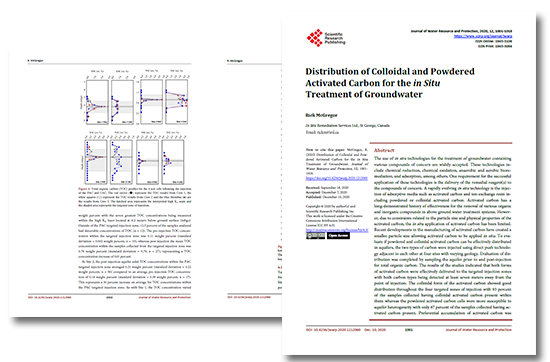
CAC vs. PAC
This article published in the Journal of Water Resource and Protection studies distribution of colloidal and powdered activated carbon for groundwater remediation.
PFAS TREATMENT IN THE NEWS

Dayton Daily News
PlumeStop was featured in Dayton Daily News because it eliminates risk from PFAS contaminants in groundwater at a low cost compared to other treatment methods.
Technology Networks
This article published in Technology Networks discusses a novel, colloidal form of activated carbon demonstrates effective, in-place removal of PFAS from groundwater.
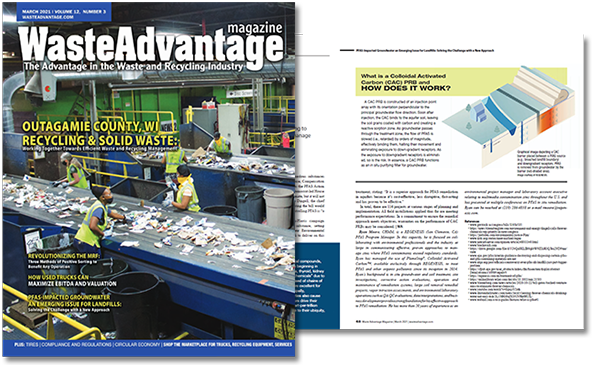
Waste Advantage Magazine
Waste Advantage Magazine shows that in situ colloidal carbon barriers are an effective, low-cost alternative to pump and treat for PFAS-impacted landfill sites.
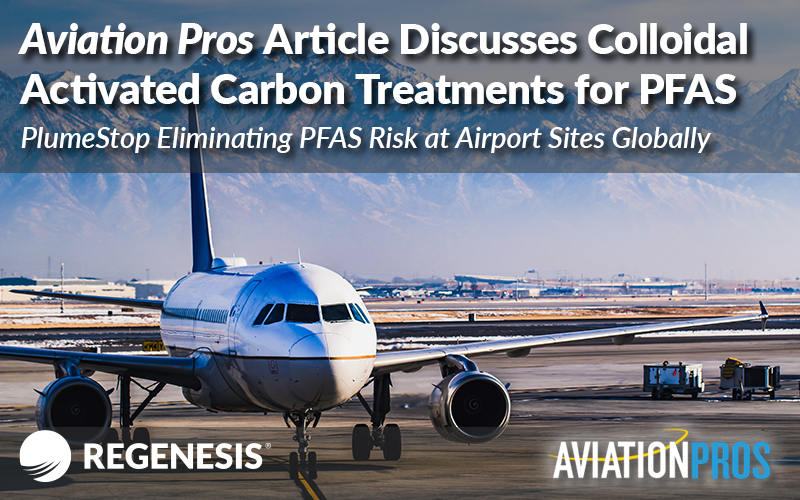
Aviation Pros
PlumeStop colloidal activated carbon field installations to treat PFAS applied thus far are meeting performance expectations and are expected to continue to perform for decades.

Podcast with AECOM
REGENESIS CEO Scott Wilson was recently featured on the Aviation Pros Podcast: The PFAS Problem alongside Rosa Gwinn, Global PFAS Technical Leader for AECOM. They discuss what can be done about PFAS.
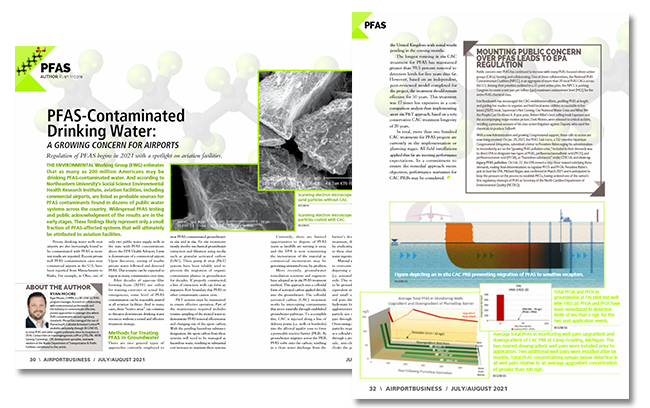
Airport Business Magazine
This article published in Airport Business Magazine discusses why PFAS contamination in groundwater is a growing concern for airports, and the role that in situ colloidal activated carbon plays in mitigating risk globally.
Treatment of PFAS
Overview
PFOA and PFOS are the two most commonly encountered examples of Per- and Polyfluoroalkyl Substances (PFAS). PFOA and PFOS are abbreviations for the chemicals “perfluorooctanoic acid” (PFOA) and “perfluorooctanesulfonic acid” (PFOS). While government regulations have been passed to eliminate the use of these contaminants in manufacturing and other business practices due to the health risks they pose, these compounds are recalcitrant – or in layperson’s terms, not readily degradable – and as a result are ubiquitous in the environment.
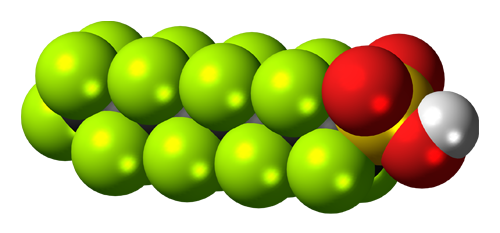
PFOA and PFOS are the two most commonly encountered examples of Per- and Polyfluoroalkyl Substances (PFAS). PFOA and PFOS are abbreviations for the chemicals “perfluorooctanoic acid” (PFOA) and “perfluorooctanesulfonic acid” (PFOS).
Historically, PFAS compounds were used in various industrial activities and were components in many industrial and consumer products because they exhibit many useful properties. As the United States EPA has indicated in their research findings, they are resistant to heat, water, and oil, and also resist degradation in the environment. You may be familiar with technologies such as Teflon, Goretex, and firefighting foams, which have PFAS compounds incorporated. From clothing to cooking – many have used products containing PFAS in their day-to-day activities.
These chemicals are of concern because they have now been detected in groundwater, drinking water, and soils in many of our local communities. This creates a potential exposure pathway to humans and possible health risks.
PFAS Groundwater Remediation Strategies
With PlumeStop, remediation professionals gain a solution that will provide an effective, more economical means of stopping the migration of PFAS plumes, thereby protecting sensitive receptors. There are many possible strategies for the in situ containment of PFAS using PlumeStop. Here are some examples:
Strategy #1: Simple Plume Cut-Off Barrier
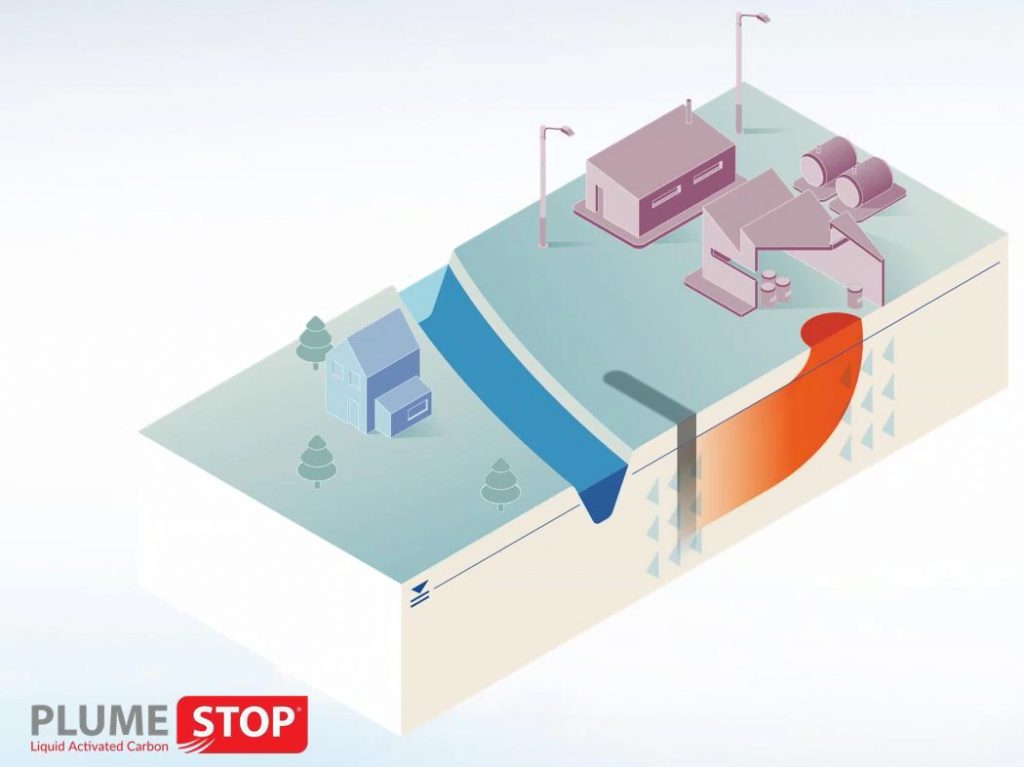
In this application, a single barrier of PlumeStop can be applied to limit plume expansion. The purpose of the application is to protect a property boundary from a plume entering or exiting a site. It can also protect receptors such as a well or water body and minimize the plume in order to contain liability.
Strategy #2: Sequence of Barriers
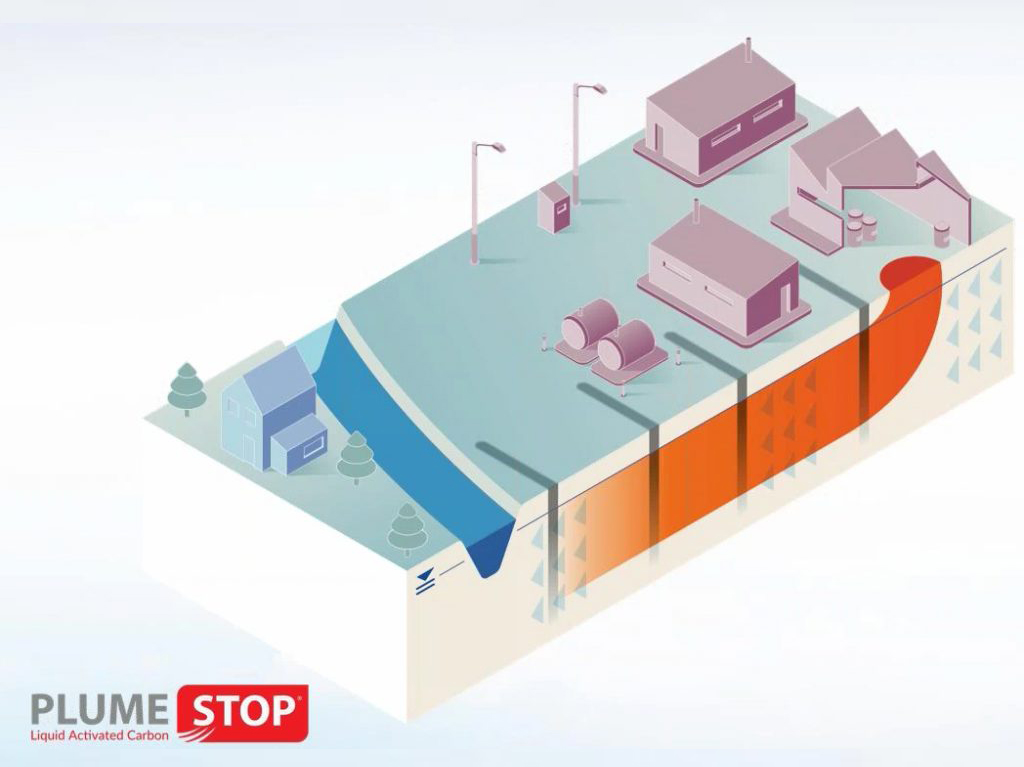
PlumeStop can also be injected as a sequence of multiple barriers designed to progressively eliminate the PFAS plume. The benefits of this approach are that it addresses the entire plume and is particularly suited for large plumes and built up areas with restricted access.
Strategy #3: Localized Receptor Protection
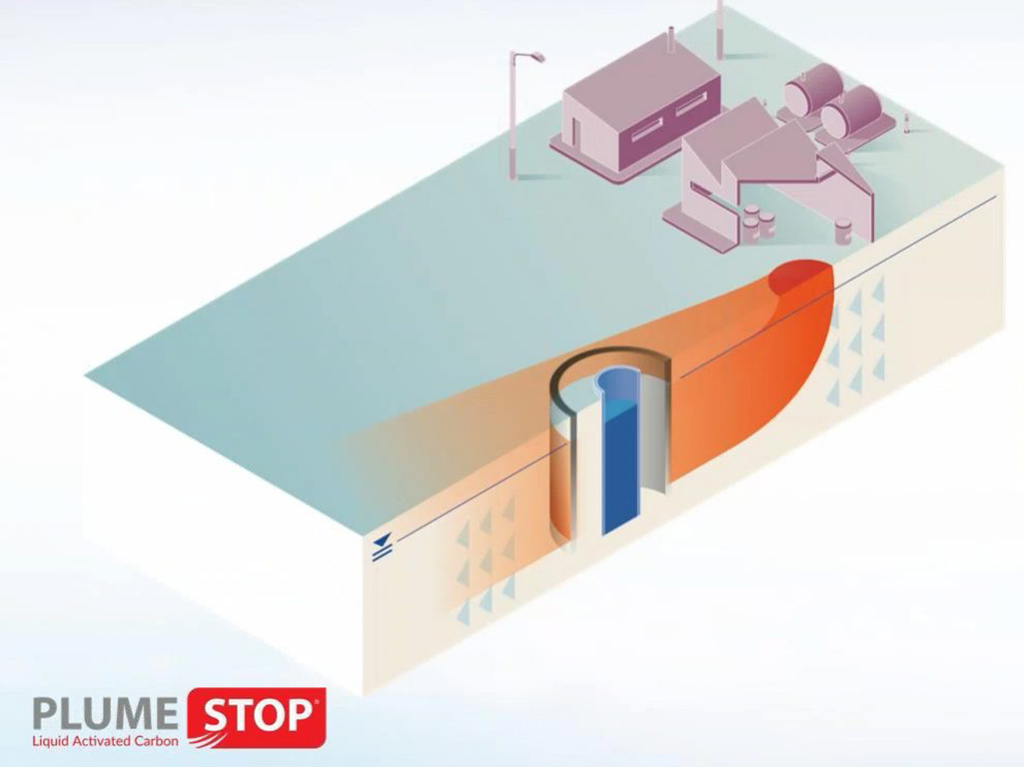
Because PFAS plumes tend to be extremely large and dilute, remediation professionals will likely need to turn to interim measures like this one to protect local receptors. Acting like a filter in the ground, the PlumeStop can be injected around extraction wells to protect them in the event that an entire plume cannot be quickly contained.
Potential Health Effects of PFAS
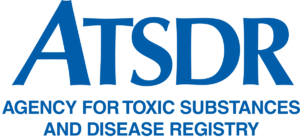 Studies have indicated that PFAS poses potential threats to human health. According to the Agency for Toxic Substances and Disease Registry (ATSDR), a division of the Center for Disease Control (CDC), PFAS can have negative effects on fetal and child development, adult hormones and fertility, high cholesterol, in addition to posing other health risks.
Studies have indicated that PFAS poses potential threats to human health. According to the Agency for Toxic Substances and Disease Registry (ATSDR), a division of the Center for Disease Control (CDC), PFAS can have negative effects on fetal and child development, adult hormones and fertility, high cholesterol, in addition to posing other health risks.
As a result, the US EPA has now started requiring the monitoring of drinking water and set lifetime drinking water advisory levels at 70 parts per trillion (ppt) for PFOA and PFOS. The EPA has also indicated that they will set screening levels and site-specific cleanup levels at Superfund sites, which will be used to determine if long-term groundwater remediation or soil remediation is needed.
Groundwater Treatment of PFAS
 To date, the use of traditional means of groundwater remediation of PFAS plumes has proven difficult. Because they are extremely robust compounds, remediation technologies such as in situ chemical oxidation (ISCO) and various forms of bioremediation have been unable to address these contaminants. The most prevalent method at this time is to use an ex situ pump and treat system with activated carbon filters. However, this process can prove very expensive and challenging due to the extremely wide-area, dilute formation of the most common PFAS plumes.
To date, the use of traditional means of groundwater remediation of PFAS plumes has proven difficult. Because they are extremely robust compounds, remediation technologies such as in situ chemical oxidation (ISCO) and various forms of bioremediation have been unable to address these contaminants. The most prevalent method at this time is to use an ex situ pump and treat system with activated carbon filters. However, this process can prove very expensive and challenging due to the extremely wide-area, dilute formation of the most common PFAS plumes.
REGENESIS has developed an in situ remediation product called PlumeStop® Liquid Activated Carbon™ that has the potential to solve the challenges faced in the groundwater remediation of PFAS. This technology can be applied under low-pressure injection, which solves the problem of excessive costs incurred with pump and treat systems. Through the use of a proprietary organic polymer dispersion chemistry, the activated carbon achieves high distribution through the subsurface and removes contaminants like PFAS rapidly from groundwater.
Six Pilot-Scale Studies Evaluating the In Situ Treatment of PFAS in Groundwater
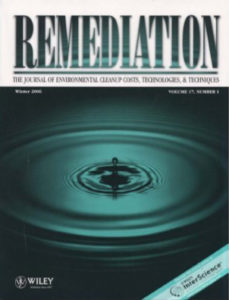 This article published in Wiley’s Remediation Journal reviews six pilot-scale in situ field studies of an unconfined sand aquifer impacted by both petroleum hydrocarbons and PFAS to determine if a variety of reagents could be used to attenuate the dissolved PFAS. The reagents were injected using direct push technology, and consisted of two chemical oxidants and four adsorbents. Performance results gathered downgradient of six permeable reactive zones 18-months post application are provided. The only reagent out of the six that reduced PFAS to below detection limits *and* prevented contaminant breakthrough was PlumeStop colloidal activated carbon.
This article published in Wiley’s Remediation Journal reviews six pilot-scale in situ field studies of an unconfined sand aquifer impacted by both petroleum hydrocarbons and PFAS to determine if a variety of reagents could be used to attenuate the dissolved PFAS. The reagents were injected using direct push technology, and consisted of two chemical oxidants and four adsorbents. Performance results gathered downgradient of six permeable reactive zones 18-months post application are provided. The only reagent out of the six that reduced PFAS to below detection limits *and* prevented contaminant breakthrough was PlumeStop colloidal activated carbon.
Research Article: Breakthrough Treatment for PFAS
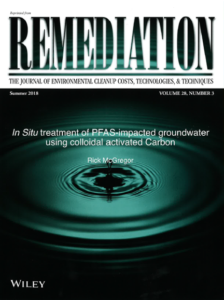 This article published in Wiley’s Remediation Journal reviews a site impacted with petroleum hydrocarbons, perfluorooctane sulfonate (PFOS), perfluorooctanoic acid (PFOA), and other perfluoroalkyl sulfonates (PFAS). A single application of PlumeStop resulted in a significant reduction of contaminant concentrations to below standards for 18+ months since the injection. Modeling indicates that the PlumeStop application event should keep the PFAS contained within the source area for upwards of 100 years. Details of the remedial design approach are provided along with results of its implementation.
This article published in Wiley’s Remediation Journal reviews a site impacted with petroleum hydrocarbons, perfluorooctane sulfonate (PFOS), perfluorooctanoic acid (PFOA), and other perfluoroalkyl sulfonates (PFAS). A single application of PlumeStop resulted in a significant reduction of contaminant concentrations to below standards for 18+ months since the injection. Modeling indicates that the PlumeStop application event should keep the PFAS contained within the source area for upwards of 100 years. Details of the remedial design approach are provided along with results of its implementation.
Evaluating the Longevity of a PFAS In Situ Colloidal Activated Carbon Remedy
 This article published in Wiley’s Remediation Journal uses various visualization and modeling methods to evaluate the in-situ remediation of PFAS via colloidal activated carbon (CAC) at a site in Central Canada. A three-dimensional reactive transport model (ISR-MT3DMS) was used to indicate that the CAC remedy implemented at the site is likely to be effective for PFOS remediation for decades. The research article concludes that due to the relatively low cost to implement the CAC, and the ability to adapt the remedy in the future, this remediation approach may be viable at other PFAS sites.
This article published in Wiley’s Remediation Journal uses various visualization and modeling methods to evaluate the in-situ remediation of PFAS via colloidal activated carbon (CAC) at a site in Central Canada. A three-dimensional reactive transport model (ISR-MT3DMS) was used to indicate that the CAC remedy implemented at the site is likely to be effective for PFOS remediation for decades. The research article concludes that due to the relatively low cost to implement the CAC, and the ability to adapt the remedy in the future, this remediation approach may be viable at other PFAS sites.
Lessons Learned, Fate and Transport, and Reducing Exposure
 In this webinar we are pleased to have a special guest presentation by Virginia (Ginny) Yingling, Senior Hydrogeologist in the Environmental Health Division of the Minnesota Department of Health. Ginny discusses PFAS contamination in Minnesota, including lessons learned from the state’s investigation of a chemical production facility, contaminant fate and transport, and reducing exposure. She is joined by Kristen Thoreson, PhD, Director of Research and Development at REGENESIS, who presents case studies of low-cost in situ remediation of PFAS using colloidal activated carbon.
In this webinar we are pleased to have a special guest presentation by Virginia (Ginny) Yingling, Senior Hydrogeologist in the Environmental Health Division of the Minnesota Department of Health. Ginny discusses PFAS contamination in Minnesota, including lessons learned from the state’s investigation of a chemical production facility, contaminant fate and transport, and reducing exposure. She is joined by Kristen Thoreson, PhD, Director of Research and Development at REGENESIS, who presents case studies of low-cost in situ remediation of PFAS using colloidal activated carbon.
Low-Cost In-Situ Remediation with Colloidal Activated Carbon
 In this webinar we are pleased to have a special presentation by Scott Wilson, President & CEO of REGENESIS. In this presentation he discusses eliminating risk of PFAS contamination in soil and groundwater via low-cost in situ remediation with colloidal activated carbon. By coating flux zones of an aquifer with colloidal activated carbon, a permeable sorption barrier is created in situ, purifying groundwater as it passively migrates.
In this webinar we are pleased to have a special presentation by Scott Wilson, President & CEO of REGENESIS. In this presentation he discusses eliminating risk of PFAS contamination in soil and groundwater via low-cost in situ remediation with colloidal activated carbon. By coating flux zones of an aquifer with colloidal activated carbon, a permeable sorption barrier is created in situ, purifying groundwater as it passively migrates.
8 Reasons to Consider Colloidal Activated Carbon to Treat PFAS Contaminated Military Sites
 This ebook outlines 8 reasons to consider colloidal activated carbon to treat PFAS contaminated military sites. The most prevalent method to treat PFAS is an ex situ pump and treat system with activated carbon filters. But this process is challenged by the wide-area and dilute nature of PFAS plumes. Additionally, pump and treat system’s high operating costs can make it impractical for organizations operating within tightly controlled budgets. Recognizing these challenges, REGENESIS® offers an alternative to traditional remedial technologies, working with clients to apply PlumeStop®, a colloidal suspension of activated carbon particles milled down to 1-2 microns formulated to widely distribute in situ under low pressure.
This ebook outlines 8 reasons to consider colloidal activated carbon to treat PFAS contaminated military sites. The most prevalent method to treat PFAS is an ex situ pump and treat system with activated carbon filters. But this process is challenged by the wide-area and dilute nature of PFAS plumes. Additionally, pump and treat system’s high operating costs can make it impractical for organizations operating within tightly controlled budgets. Recognizing these challenges, REGENESIS® offers an alternative to traditional remedial technologies, working with clients to apply PlumeStop®, a colloidal suspension of activated carbon particles milled down to 1-2 microns formulated to widely distribute in situ under low pressure.
Colloidal Activated Carbon Treatment of PFAS Featured in Dayton Daily News
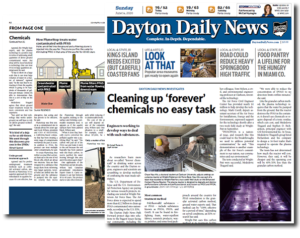 PlumeStop, a colloidal activated carbon remediation technology from REGENESIS, was recently featured in the Dayton Daily News because of its ability to eliminate risk from PFAS contaminants in groundwater at a low cost compared to other currently available treatment methods. Because PFAS is a growing concern for communities trying to protect public health, PlumeStop is increasingly being applied to halt the spread of PFAS plumes and quickly remove risk. This article written by Ismail Turay Jr. is republished courtesy of the Dayton Daily News.
PlumeStop, a colloidal activated carbon remediation technology from REGENESIS, was recently featured in the Dayton Daily News because of its ability to eliminate risk from PFAS contaminants in groundwater at a low cost compared to other currently available treatment methods. Because PFAS is a growing concern for communities trying to protect public health, PlumeStop is increasingly being applied to halt the spread of PFAS plumes and quickly remove risk. This article written by Ismail Turay Jr. is republished courtesy of the Dayton Daily News.
Questions about your site?
If you would like to discuss whether PlumeStop might be an effective remediation solution for your contaminated site, please contact us today. Our team of remediation experts will provide advice and, if you have site characterization data, will also develop a remediation design for your site completely free of charge.
Additional PFAS Resources:
Interested in learning more about PlumeStop and PFAS?
- Download the PlumeStop Technical Bulletin 5.1
- Watch a video featuring REGENESIS Research and Development Director Kristen Thoreson on the remediation of PFAS
- View the webinar: In Situ Containment of PFAS with PlumeStop® Liquid Activated Carbon™
- Read the article: How Innovative Techniques Are Mitigating Toxic Threats Surrounding the Global Community, about technologies to mitigate PFAS contamination
- Download the poster presentation: Activated Carbon “Inks” for Treatment of PFOA/PFOS

 Americas
Americas Europe
Europe Français
Français Deutsch
Deutsch Italiano
Italiano Español
Español